


Oakland’s neighborhood dining options are in a near-constant state of change, and we’ve updated our 2-year-old Eat Pittsburgh to reflect some of those shifts.
Spice Island Tea House, a beloved Southeast Asian Eatery that opened in 1995, closed in 2023, as did the stellar bagel operation Gussy’s. We’ve removed both of those establishments from our dining guide, and also give our fond farewells to Fuel and Fuddle and the original Mad Mex location.
New to an updated Eat Pittsburgh: Oakland is the wonderful hot pot destination Little Corner Grill House.
Oakland is a bustling neighborhood that’s home to the city’s largest universities, a massive network of hospitals and supporting medical facilities, world-class museums and libraries, and a rich history of immigrants — all of which is reflected in the scope and diversity of the restaurants that serve it.
What we’re covering here as Oakland is technically an amalgamation of four distinct neighborhoods — North, South, West and Central Oakland — with a total area of about 1.5 square miles. There are a few primary dining corridors in the blocks surrounded by the University of Pittsburgh and Carnegie Mellon University, but small establishments are also peppered throughout the side streets.
“Craig Street is incredible,” says Ziad Adamo, owner of the 52-year-old restaurant Ali Baba. “It feels a lot different now that CMU has developed so much over the years, but these blocks still maintain a sense of history.
“Businesses have come and gone, of course, but we still have a lot of small, independent places and a vibrant community of students and faculty.”
Respective of the mix of people who pass through Oakland every day to live, visit, work, study and teach, the neighborhood’s restaurants range from refined dining to food trucks. Alongside Squirrel Hill, Oakland is the best neighborhood in Pittsburgh to visit if you’re craving international cuisine. And, if you’re dining out on a budget, you’ll also find some great deals, particularly during lunch hours. On the flip side, fewer places serve food late into the night than you’d expect in a neighborhood with so many students (although there are some newer options here).
“The neighborhood has changed somewhat over the years. Back when we opened, it was driven much more by youth culture than it is now. And it was a lot less expensive, so you could take a lot more risks because your rent wasn’t very high,” says Ron Lee, former owner of Spice Island Tea House, which opened in 1995 and closed in 2023.
Still, Lee says, the neighborhood retains its vibrancy, although he wishes for fewer national chains. And independent restaurants keep opening despite those corporate takeovers of spaces.
“Oakland has a very diverse population, and that means we get a large variety of people who can offer their own cuisines,” says Gloria Pei, co-owner of Oakland eateries Little Corner Grill House, Hundred Miles Crepes food truck and Bomb Chicken & Summer Tea.
“We have very different customers at each of our businesses. They attract a wide population from all over the world.”
There are so many restaurants in Oakland that we would be remiss not to offer a tip of the hat to a few that aren’t on this list. Neighborhood fixtures such as Union Grill, Pamela’s P&G Diner and Lucca Ristorante are home to countless meals and memories. Another old-school establishment, Golden Palace, opened in 1990 and has long operated with an all-you-can-eat buffet as its draw. It’s now beginning to find its voice as one of the city’s premier Cantonese restaurants.
Bao, a relatively new establishment focused on dumplings, brings pan-Chinese dim sum to the neighborhood. Spirits & Tales at the top of The Oaklander Hotel offers some of the best views in town, and The Porch at Schenley is the place for relaxed dining by the park. And scores of fast-casual spots, including Northeastern Kitchen, Oishii Bento, The Colombian Spot and CHiKN, offer fast, affordable and tasty meals.
These six restaurants, plus food trucks, however, capture the essence of what makes dining in Oakland what it is today.
Hal B. Klein, Twitter @halbklein and IG @halbklein
KEY
$ = $15 and under
$$ = $15-$25
$$$ = $25-$45
$$$$ = $50 and up


Enterprising restaurant operators Kevin Gao and Gloria Pei opened Little Corner Grill House in mid-2023 as a follow-up to their neighborhood food truck, Hundred Miles Crepes. The central theme of their two-room restaurant, a Post-Gazette Best New Restaurant of 2023, is a celebration of hot pots.
Hot pots are a style of communal dining popular throughout China. A cauldron of broth (or multiple broths separated by a divider) is set on a heating element at the center of a table loaded up with a customizable selection of meats, vegetables, seafood and noodles. The broth gets richer and thicker as more ingredients are added to the simmering pot.
“It’s a DIY style of eating. You can customize it to whatever you want. We have a lot of options to choose from,” Pei says.
Pei is from Northeast China; she’s also the regional manager for the Canada-based food delivery app Fantuan. Gao, the restaurant’s primary chef, is from Hebei province outside of Beijing.
They decided to open Little Corner Grill House because, at the time, Pittsburgh didn’t have any restaurants that fully specialized in hot pots, though a smattering did offer single tables or pre-made pots. They wanted to do something on a more significant scale.
“We’ve become popular with a lot of American and international people in addition to the Chinese student population. Everyone comes to my location and says that it’s very different from what they find anywhere else in Pittsburgh,” Pei says. “We are doing our best to give our customers the full authentic experience.”
Late-night eaters are in for a treat — the restaurant is open until 2 a.m. nightly.
The couple expanded their entrepreneurial reach in mid-2024 with the addition of a third eatery just down the block from Little Corner: Bomb Chicken & Summer Tea. The establishment specializes in fried chicken dishes ranging from crispy chicken burgers to juicy whole birds.
The order: You’ll want to assemble a group of 3 to 6 people to have a comprehensive hot pot experience.
Here’s what you do: Start by choosing a couple of broths. My go-to move is to get a fiery, ma-la-spice-infused, Chongqing-style (the medium is plenty hot even for hot heads) on one side and tart and tangy golden hot and sour on the other. Mushroom and bone broths are solid choices for those looking for milder options.
Use the tableside iPads to assemble your feast with whatever looks good to you at the moment; a good guideline is to get one meat, two or three vegetables and one noodle for every two people.
As a general rule, you’ll want to add longer-cooking items such as lotus root and raw potato first, then run through and enjoy the thinly sliced meats as they get tender. Add leafy vegetables and fish after that, and finish with noodles, which will lap up the thickened broths. You can (and almost certainly will) continue to place orders throughout the experience.
Little Corner also offers a variety of malatang — individually portioned Sichuan-style hot pot bowls with bases such as beef, lamb, fish and offal — and dry pots with similar ingredients. The menu is rounded out with homestyle stir-fry dishes, grilled whole fish with vegetables and appetizers like the crisp and refreshing “Pat the Cucumber.”
Gao brings out a selection of street-food-style grilled skewers for late night eats, with options that include everything from tender chicken thighs and luxuriously fatty sausage to lamb kidneys and chicken hearts.
301 N. Craig St.; littlecorner.top



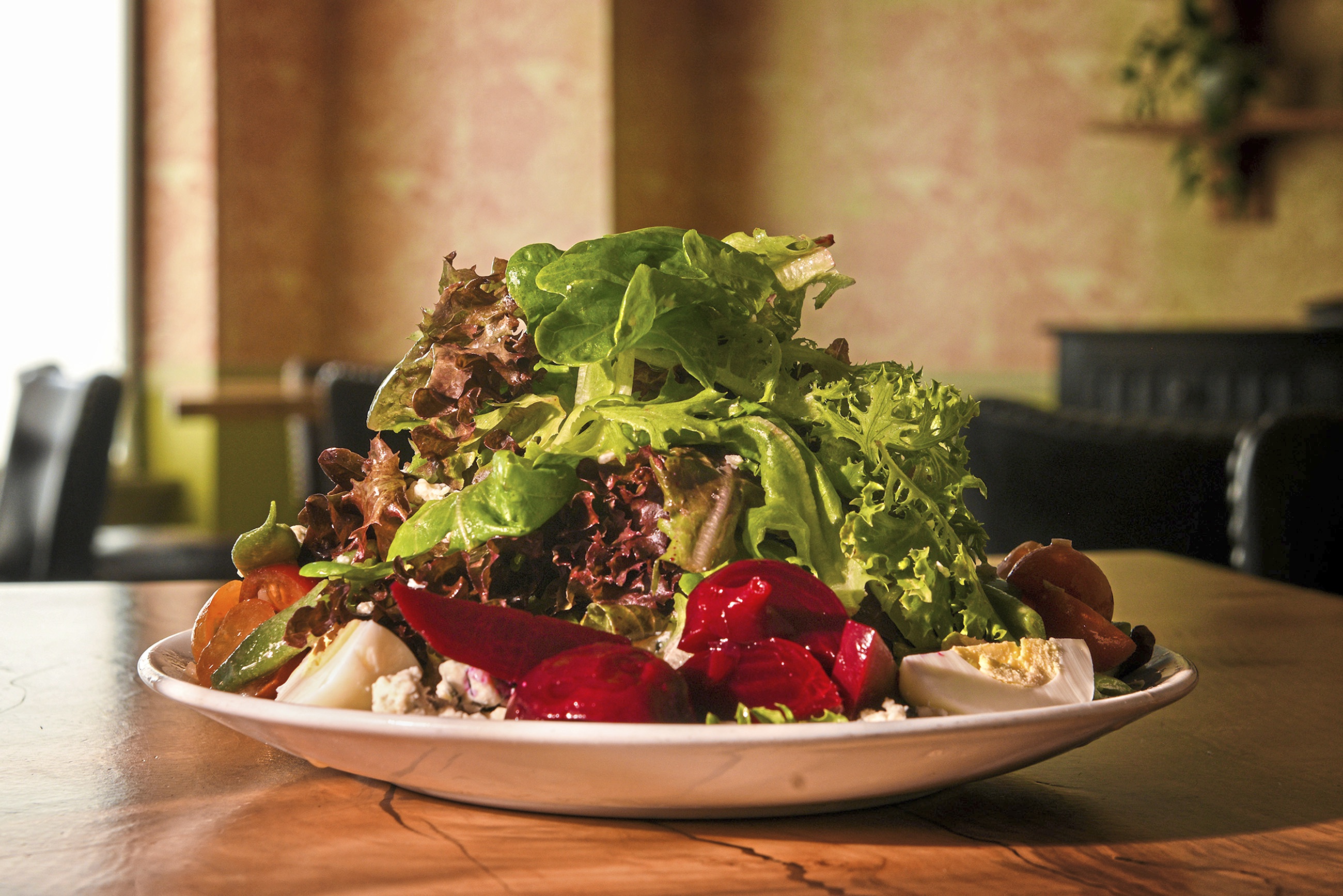
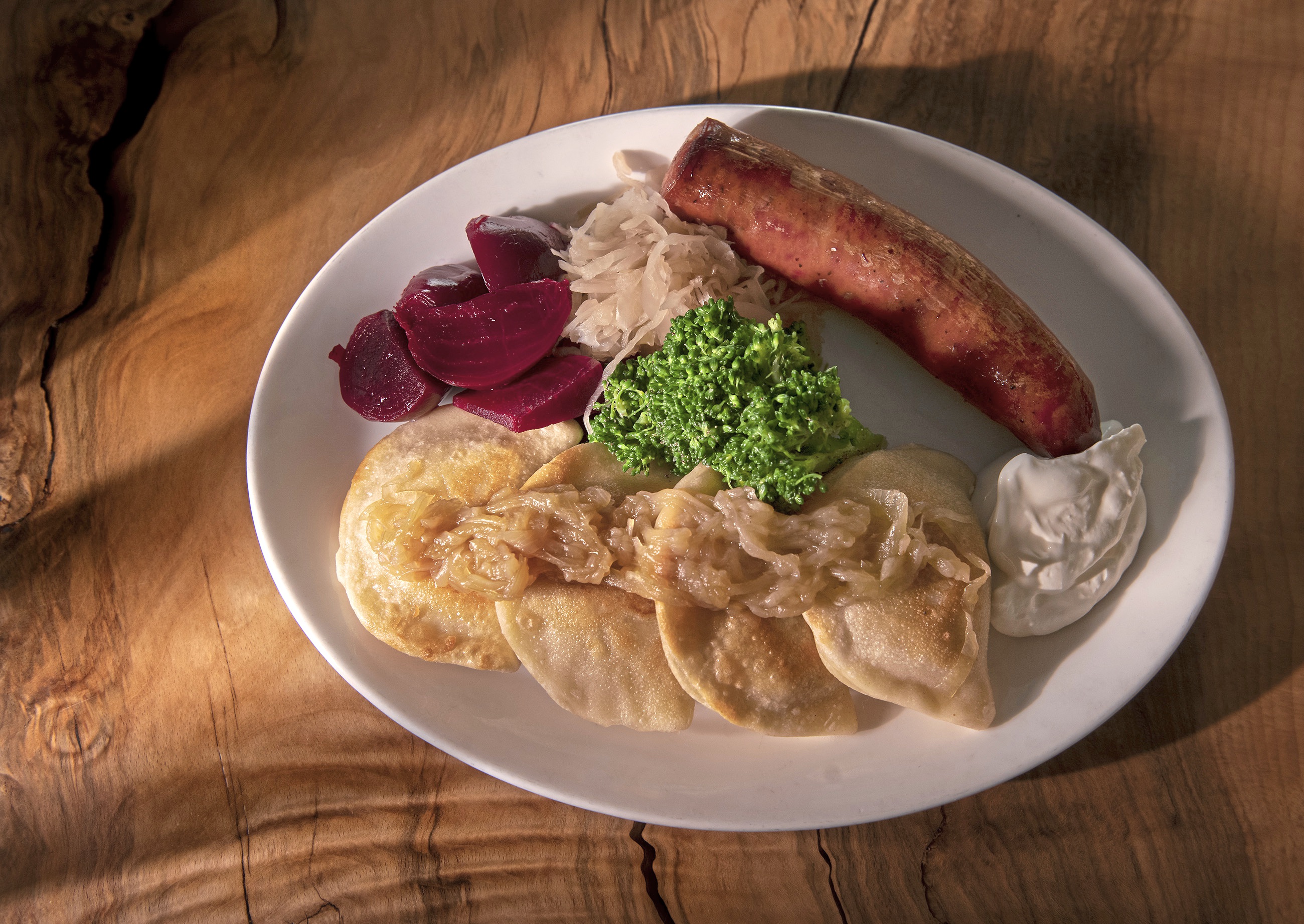


Few establishments have transformed modern Pittsburgh dining as much as Butterjoint. The roster of chefs, bartenders and front-of-house staff that has passed through the establishment over the years includes a host of influential hospitality workers in Pittsburgh and beyond.
A brief history: There used to be two coexisting establishments, with Legume (which opened in Regent Square in 2007 and moved to Oakland in 2011) occupying the more formal dining room and Butterjoint (2012) as the elegant bar in an adjoining space. Legume was one of the city’s most thrilling restaurants, driven by a deep connection to regional agriculture and foodways. (At one time, it even had an in-house butcher on staff.) Butterjoint grew to equal importance as a bar, with a cocktail and beer program that rivaled any in town and a menu of pierogi plates and tavern-style hamburgers that did the same.
In early 2020, Trevett and Sarah Hooper fused the two into Butterjoint All Day, but after just a few test services in March the new concept went takeaway only for the next 14 months due to the pandemic. It reopened for on-premise service in May 2021 as Butterjoint, with the former Legume dining room transformed into a more casual, but still charming, space designed by Thommy Conroy. The menu was in flux for about a year, incorporating Legume dishes, Butterjoint dishes, a smashburger instead of the tavern burger and a few other things. Lately, the restaurant has fallen into a rhythm with offerings that pull largely from classic Butterjoint with hints of Legume, as well as some nods to the classic American diner.
The Hoopers sold Butterjoint to its executive chef, George Austin, in November 2023.
“Number one, George is someone with a ton of integrity. He’s honest and he works hard. Just in terms of his talents, I think they’re much better suited for the world we’re in now. He’s a way more experienced chef than I was when I started Legume, and he has a much broader perspective than I did,” Hooper said at the time.
The order: The beloved tavern burger, a juicy 8-ounce patty cooked to temperature and dressed with Butterjoint sauce, lettuce, tomato and a house-made sour pickle, is back after that departure to Smashburger City. There’s always a “fancy” option, too, which offers a more elaborate, often seasonal topping build. And Butterjoint’s house-made veggie burger is a treat for diners looking for a plant-based burger.
You can — and should — get those outstanding pierogis on a plate with various combinations of house-made sauerkraut, caramelized onions, pickled beets, greens and kielbasa. Hearty dinner salads are a staple, built with local and seasonal produce and a rotating cast of tasty items rounding out the bowl.
There tend to be a couple of larger plates specials such as moules frites featuring the restaurant’s signature hand-cut, tallow-cooked fries and hearty items like a double-cut pork chop with braised baby cabbage and roasted apples.
I’m a big fan of Butterjoint’s pickles and its sauerkraut balls; both make for terrific starters and bar snacks. The desserts, including the Appalachian specialty vinegar pie, are on point.
Butterjoint’s beverage program has always ranked among the most exciting in Pittsburgh, and that remains true today (plus, the bar is amongst the coziest). There are classic cocktails, spins on classics and Butterjoint originals that now are classics, as well as a deep selection of beer, spirits and wine. Its alcohol-free drinks list, which always includes a marvelous shrub or two, is outstanding, too.
208 N. Craig St.; butterjoint.com
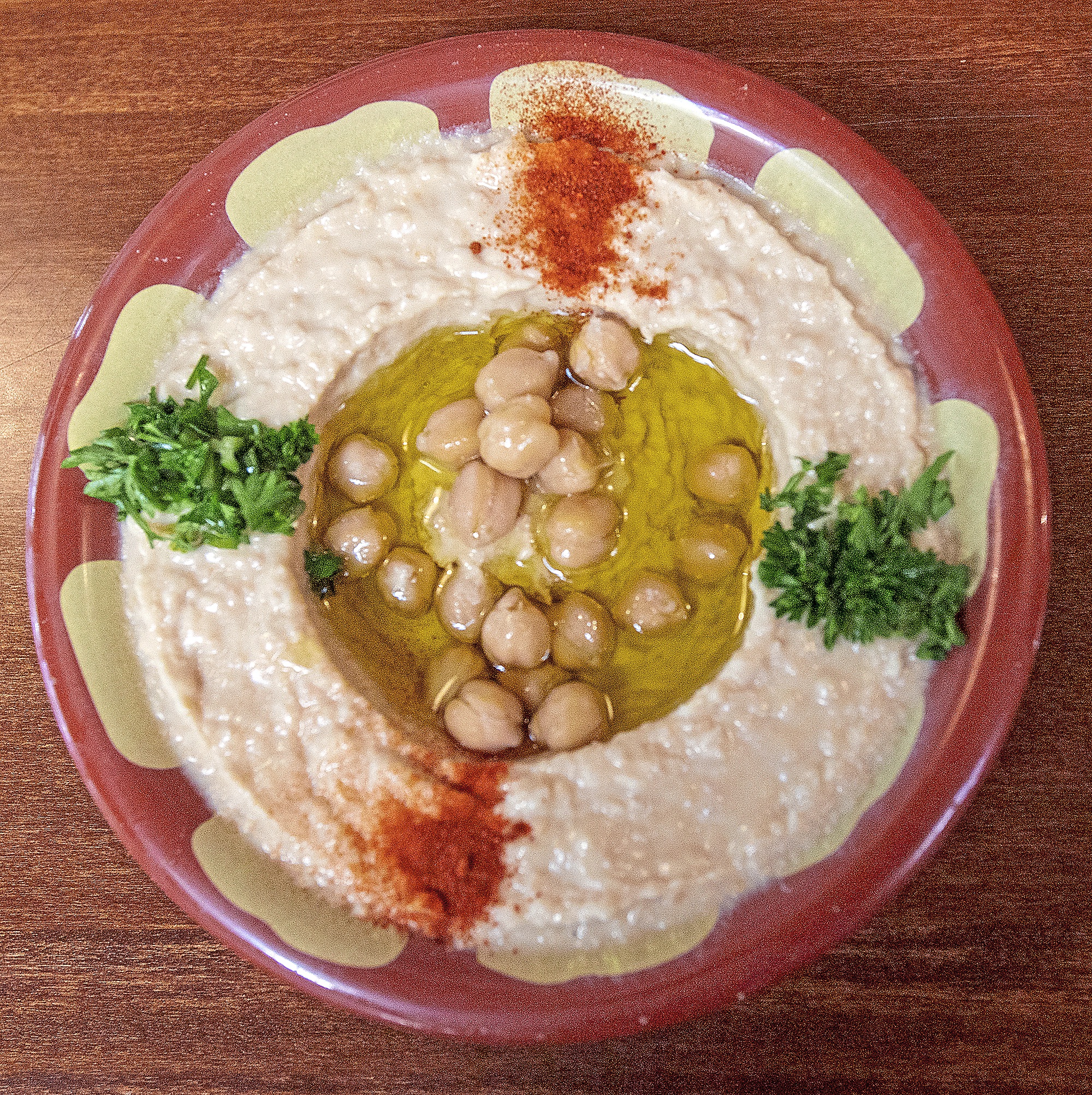
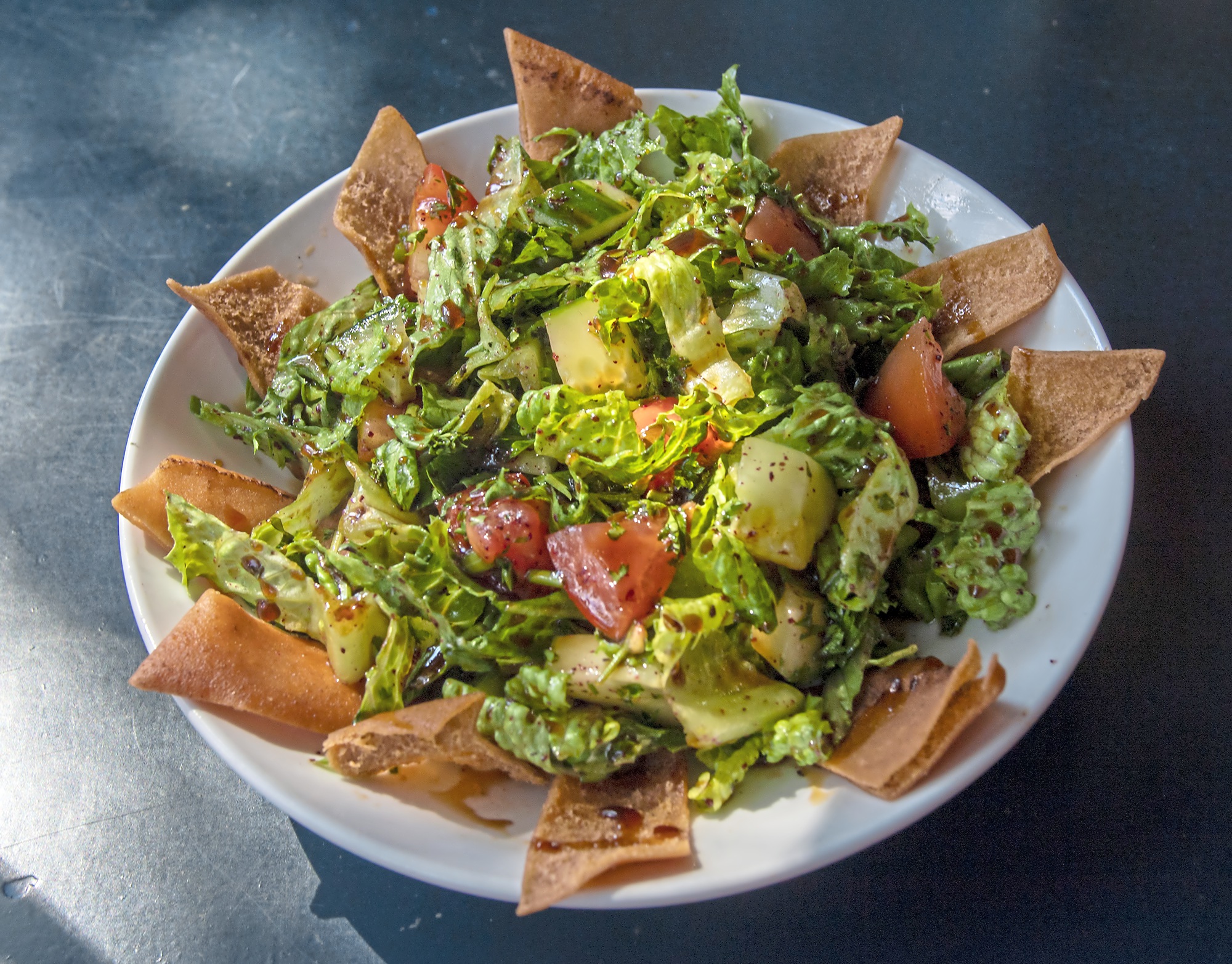
“We are so grateful and humbled by the support we’ve had all of these years,” says Ziad Adamo, co-owner of Ali Baba.
Three immigrants from Syria, all graduate school students at the time, opened the Craig Street restaurant in 1972. Adamo and his business partner, Caesar Makhoud, purchased the restaurant in 2012 from one of them, his father-in-law, Ivan Makhoul.
Adamo says that providing a welcoming and open atmosphere has always been at the heart of the restaurant. The kitchen, significantly upgraded in 2019, is staffed with refugees from Iraq and Syria, family members and elders who are like family to Adamo. The friendly front-of-house is largely of Syrian heritage.
“I know it’s cliche to say, but this is a family business, and that’s what keeps it vibrant,” he says.
Ali Baba’s clientele comes mainly from the nearby universities, especially Carnegie Mellon, whose campus surrounds the Craig Street dining corridor. Adamo says that the curiosity of the diverse cadre of students who patronize the restaurant helps keep it lively.
“Younger people are eager to try different ethnic foods. It helps that they come in here with an open mind,” he says.
Adamo, who was born in Damascus and immigrated to the United States when he was 22, says his intention is to transport customers to the Syria he remembers. While the restaurant has stayed in the same location throughout its 50-year history, the interior was completely renovated when it was a takeout-only operation during the pandemic. The renovation gave the space a facelift without destroying the sense of history. Ali Baba is bright and airy yet cozy because of how it’s sectioned into comfortable zones. An outdoor dining area is also in the works.
“We’re trying to bring a piece of our home to Pittsburgh. That’s even more important today considering all the strife that has happened in Syria over the last decade,” he says.
The order: Ali Baba’s menu is classic Middle Eastern cuisine, with everything but the pita scratch-made in-house. The flavors are well rounded, and it’s clear there’s a lot of passion and attention to detail in preparation, which isn’t always the case at restaurants that have been around this long.
Be sure to start with an assortment of appetizers and dips. Ali Baba’s baba ghanooj is smoky, luscious and bright, and among the best in Pittsburgh. The hummus is substantial, more chickpea than tahini, and is satisfying enough to stand on its own for a light lunch. Artichoke hearts, dressed with garlic, tahini and oregano, make for a bright companion to the meal. Ali Baba is one of the few places around town to offer kibbe nayyeh, raw minced lamb mixed with cracked bulger and topped with good olive oil and sliced red onion.
There are a handful of skewers such as chunks of Elysian Fields lamb, spiced lamb kofta and chicken that are very much worth getting, as is the lovely spinach pie. On the extended dinner menu, there are larger format dishes, such as Elysian Fields lamb shank and sheik el-mashshi (roasted eggplant filled with seasoned ground lamb and onion).
Ali Baba has a full bar.
404 S. Craig St., alibabapgh.com


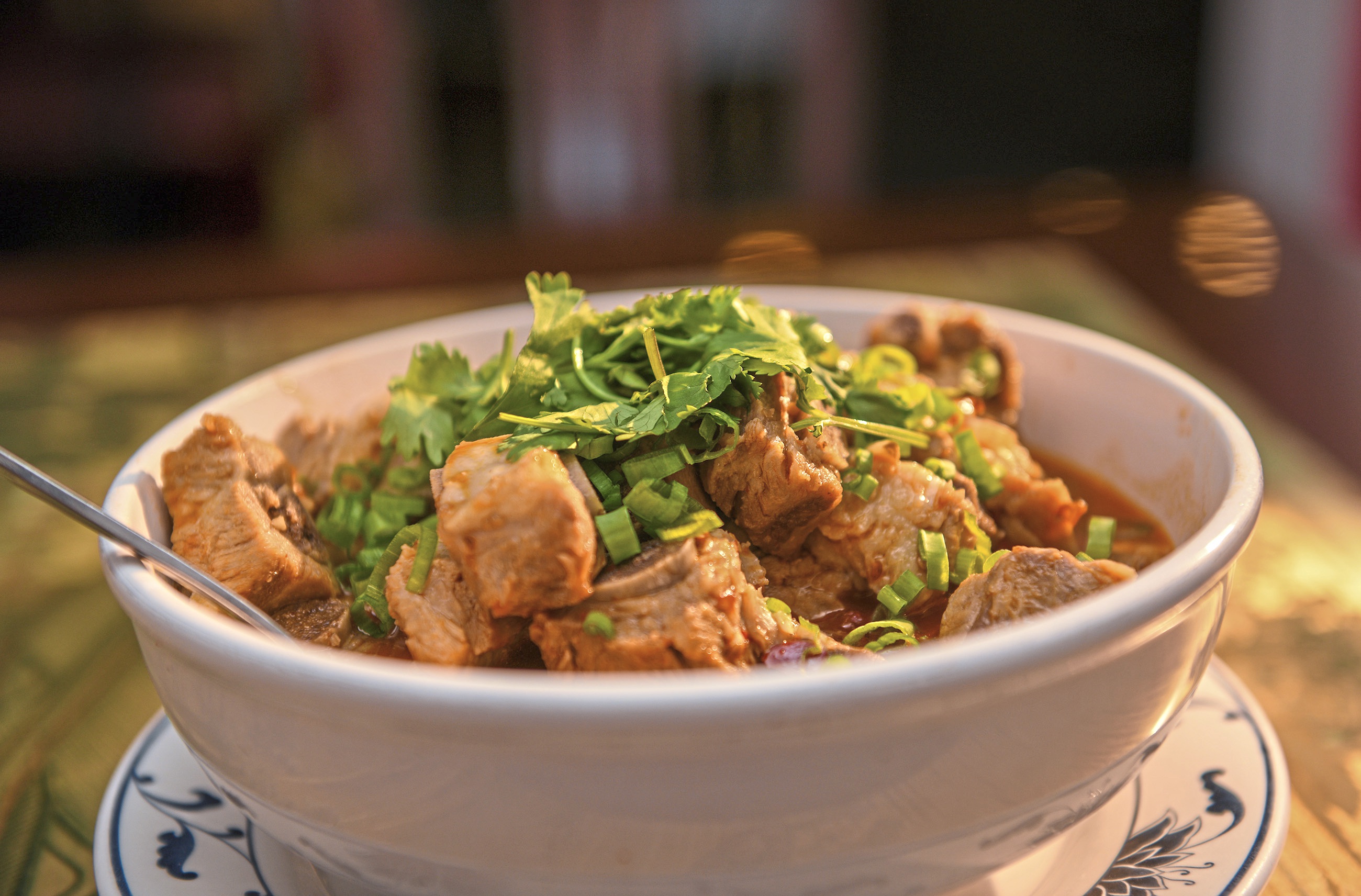
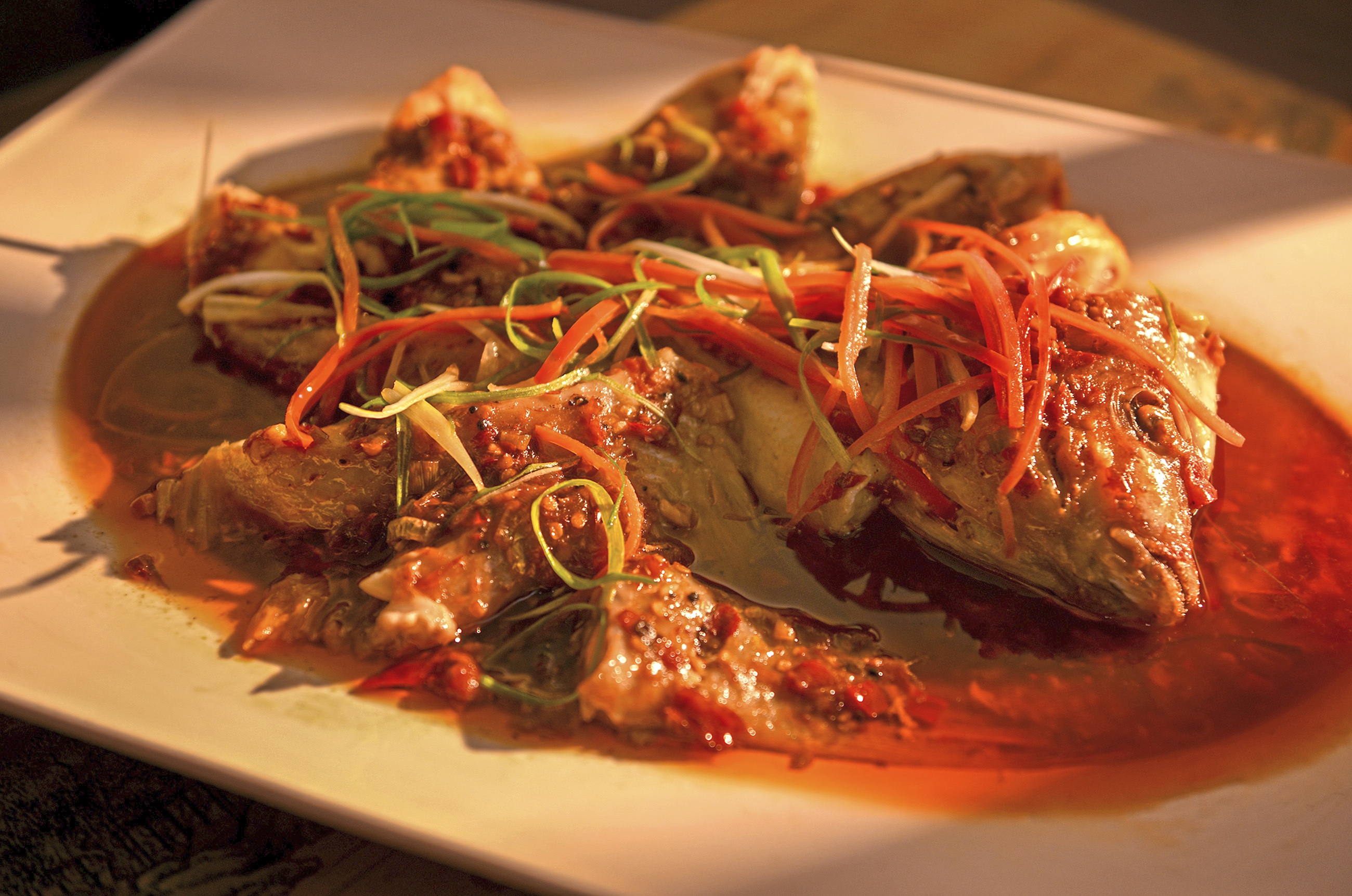


Hunan Bar opened as a hybrid Chinese-Cuban joint (a combination that might sound a little peculiar but has long roots in New York City and Miami). Years later, its former owners, Lailanie and Wai Fei Chan, decided to move deeper into Hunan cuisine, which is one of the more challenging regional Chinese cuisines to find in Pittsburgh.
Now, the restaurant is set to move into a new phase. The Feis sold Hunan Bar in early August to Xiquan Shao and Shibin Yan, who are from Harbin in the far northeast of China. But the kitchen staff, including longtime chef Tianran Lin, remains the same.
“We are going to keep the specialty spicy Hunan food as the most important part of the menu. But we will also add some specific dishes from other parts of China,” says general manager Zhilin Gon.
Hunan shares a border with Sichuan province, and although there is some overlap in dishes, its cuisine is quite distinct from its more famous culinary neighbor. Hunan province is known for bold, chile-forward dishes and sour flavors without the numbing Sichuan peppers. Fish, pork, bamboo shoots and fermented foods, including tofu and black beans, are prominent ingredients.
This semi-subterranean restaurant sprawls out over several rooms. And while the main dining room is a bit dark (sit by the windows in the front for a brighter view), the energy in the space is high. It’s a perfect location for big groups looking to share a bunch of dishes. Most of the staff are less-than-fluent English speakers, but they are eager to help guide you through the menu. So, if you don’t speak Mandarin, come with a bit of patience and, perhaps, a translation app.
The order: Because Hunan cuisine is hard to find in Pittsburgh, the regionally specific dishes offered on the restaurant’s menu (which also has a lengthy greatest-hits list of Americanized and pan-Chinese dishes) are why you’re coming here.
Tofu with leeks and chile is a savory vegetarian take on a Hunanese classic typically made with pork belly. The complex flavors of the sauce are so tasty you might find yourself spooning it onto rice or directly into your mouth after finishing the dish. There is a building heat that is more of a pleasing backnote than a full-frontal sensory assault.
Hotter is Hunanese-style mustard greens, a stir-fry with lots of garlic and dry, fresh and pickled hot peppers (they’re another signature item and they’re delicious). There are always whole fish specials on the menu, such as sea bass covered in an array of chile peppers, garlic and scallions, and you should get one if you’re hungry or with a big group.
Hunan Bar is also well known for its hot pots (and is one of the few places in Pittsburgh where you can get a beautiful, bubbling version of the dish). Although the steaming bowls of broth in which you dip meat and vegetables are more common in Sichuan restaurants, they do a knock-up job here, too. There are options such as spicy fish filet and braised beef, but the smart move is to get the half spicy, half white soup combo from which you can select various ingredients to dip in. Groups of three or more should opt for the all-you-can-eat option for $25.95 per person.
The new owners recently added some Northern Chinese dishes such as stir-fried pork belly with tomato, corn, eggplant and green beans. Those items are listed in blue on the extensive specials menu whiteboard in the main dining room. Be sure to explore the various dishes written on the menu.
239 Atwood St., hunanbar.com
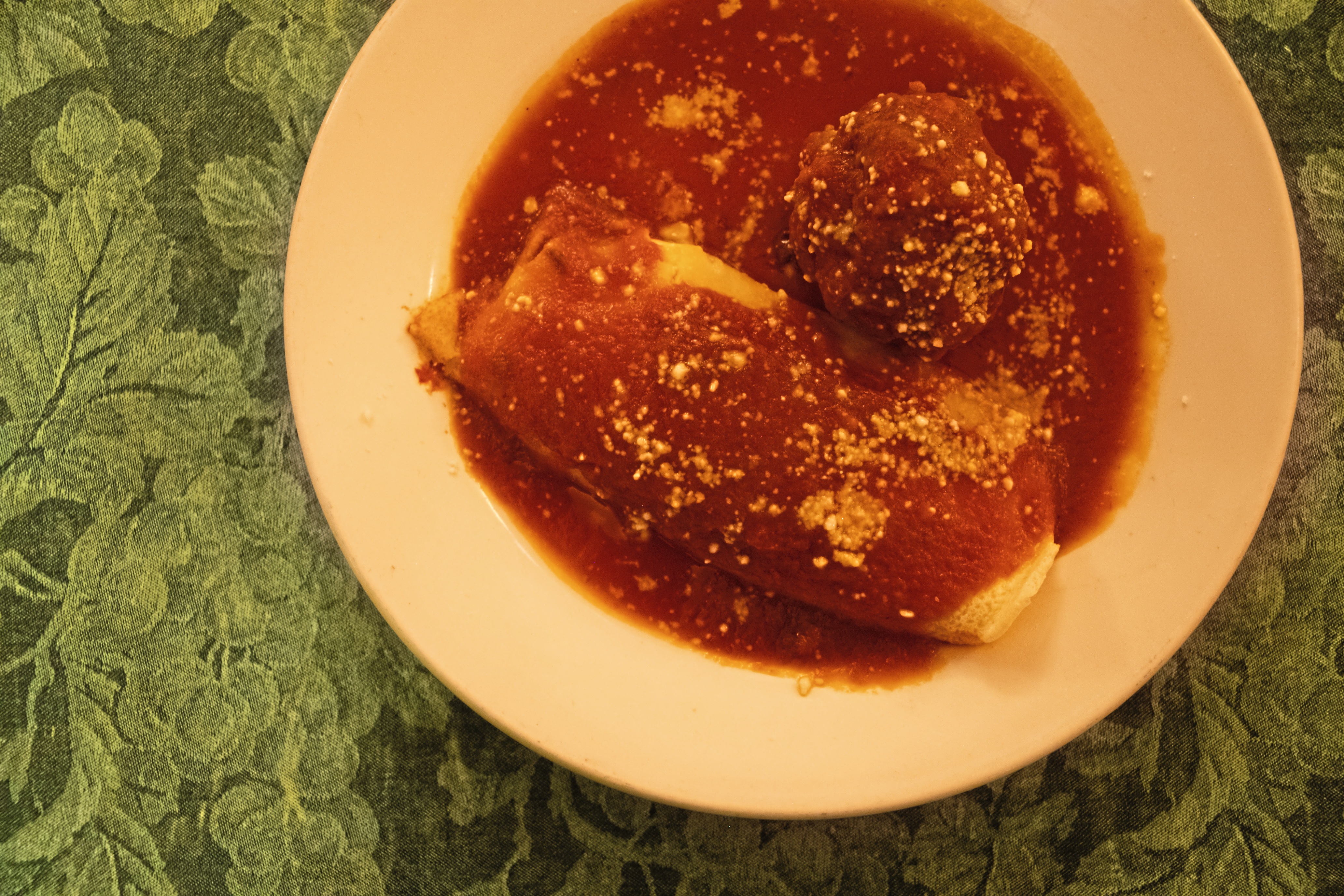
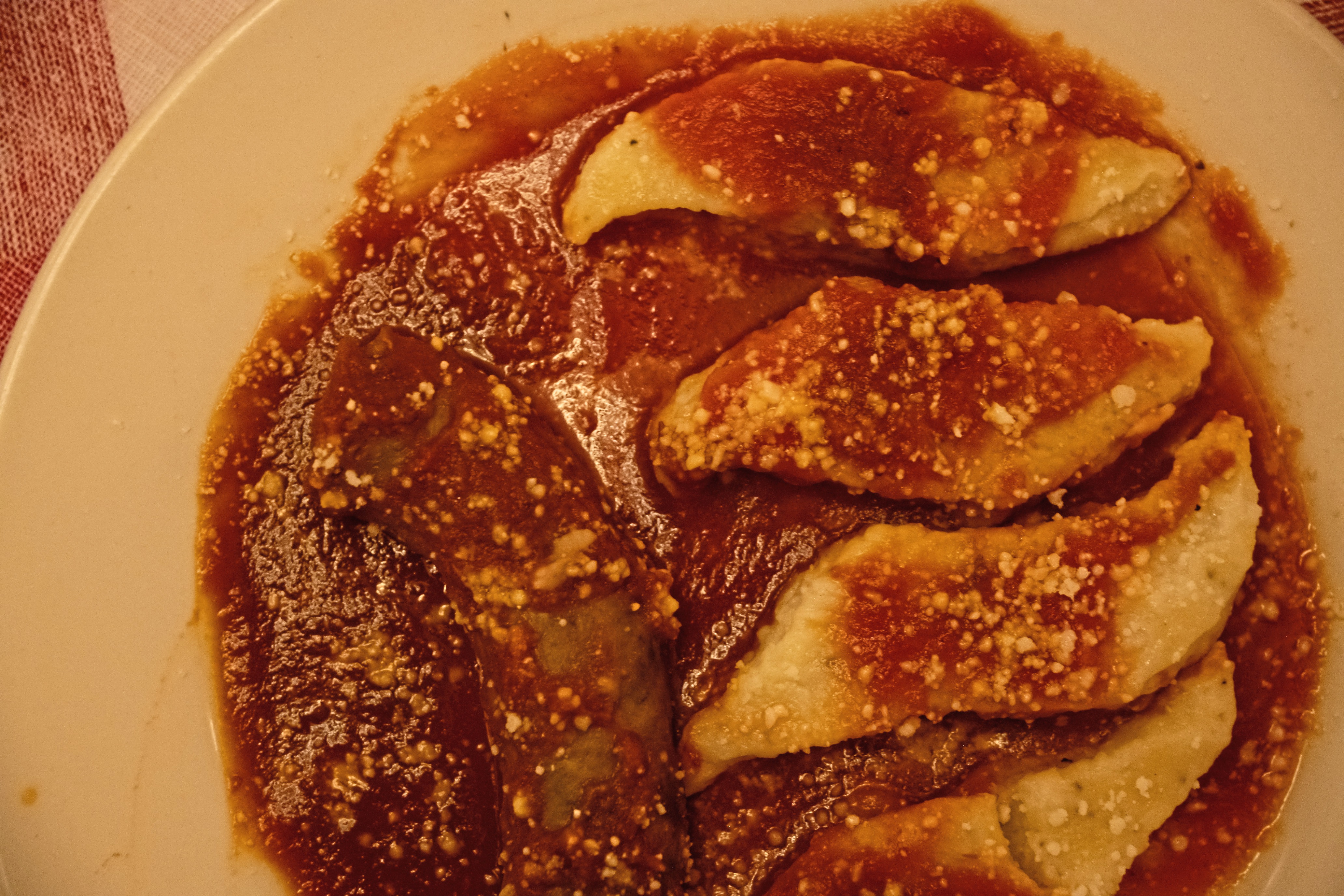
Zarra’s Restaurant, perched on a hilly curve of Bigelow Boulevard amid tall buildings, is Oakland’s best out-of-the-way gem. The neon-signed exterior gives off a locals-only vibe (even for most locals, it’s an “I’ve always wondered what’s in there” spot). Yet, this Italian restaurant is actually one of the most welcoming, when-you’re-here-you’re-family joints in town. Indeed, it’s family that makes this place run.
Johnny “Banana” and Judy Zarra first operated the space as a legendary nightclub, The Electric Banana, from the 1970s to 2000, peaking in the ’80s and ’90s as the city’s most important punk rock venue. Bits and bobbles from that period, including an incredible painting of Henry Rollins outside the club, are peppered throughout the cozy front bar and wildly decorated dining room. You’ll also find family portraits, including Johnny and Judy’s son Donny, now the general manager of Zarra’s, at various points in his life.
“I grew up in this place,” Donny Zarra says.
Donny and Johnny started selling family recipe sausage and meatball sandwiches to laborers working on the massive hillside buildings in the late 1990s. Those family recipes eventually translated to a restaurant, which opened in 2000, and in 2004 Johnny Zarra built a terrace, which provides a one-of-a-kind view of Oakland and is particularly lovely on a warm night.
“Everybody who’s Italian has someone who makes the sauce that they like. But we think ours will stand up with them,” Donny says.
The order: Judy Zarra runs the kitchen. She might have grown up in rural West Virginia, but thanks to instruction by Johnny’s family, her menu is stacked with recipes that trace back to Calabria and Basilicata, Italy, mixed with one of the better versions of Italian-American red-sauce dishes in Pittsburgh.
“She grew up on a farm, and she was already a good cook when they met. Then my dad’s family started teaching her all their secrets,” says Donny.
There is a rotating menu of dishes (what’s listed online might not be available every night), but there are staples that you should order, particularly Manicotti di Antoinette, house-made crepes filled with fresh ricotta, and Judy’s Homemade Ricotta Noodles, a fluffy, gnocchi-like dumpling made of wheat flour and ricotta. Both are topped with Zarra’s tasty red sauce and served with meatballs, sausage or eggplant Romano. Those meatballs are airy, and the classic sweet Italian pork sausage with a hint of fennel is also a standout. And they should be: Donny and Johnny regularly shop for ingredients in the Strip District and hand craft all meat dishes from whole muscle cuts.
“My grandfather was a butcher by trade. He had a shop on Larimer Avenue,” Donny says. “We keep some of that tradition.”
The Zarra’s sampler will allow you to nosh on all of the restaurant’s signature items, and stuffed banana peppers make for a tasty shared appetizer. The restaurant has a full bar and a solid wine list.
3887 Bigelow Blvd.; zarraspgh.com


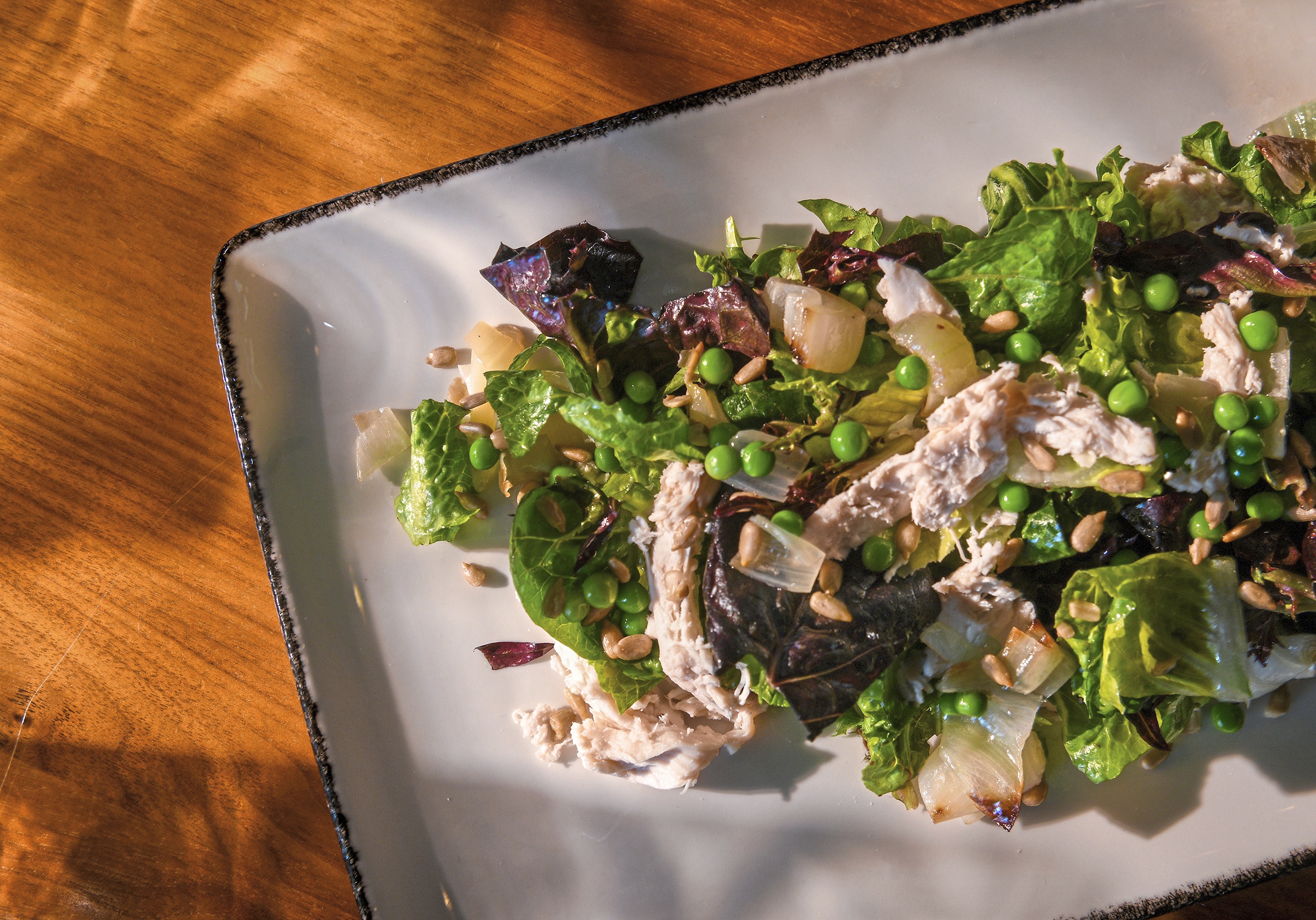
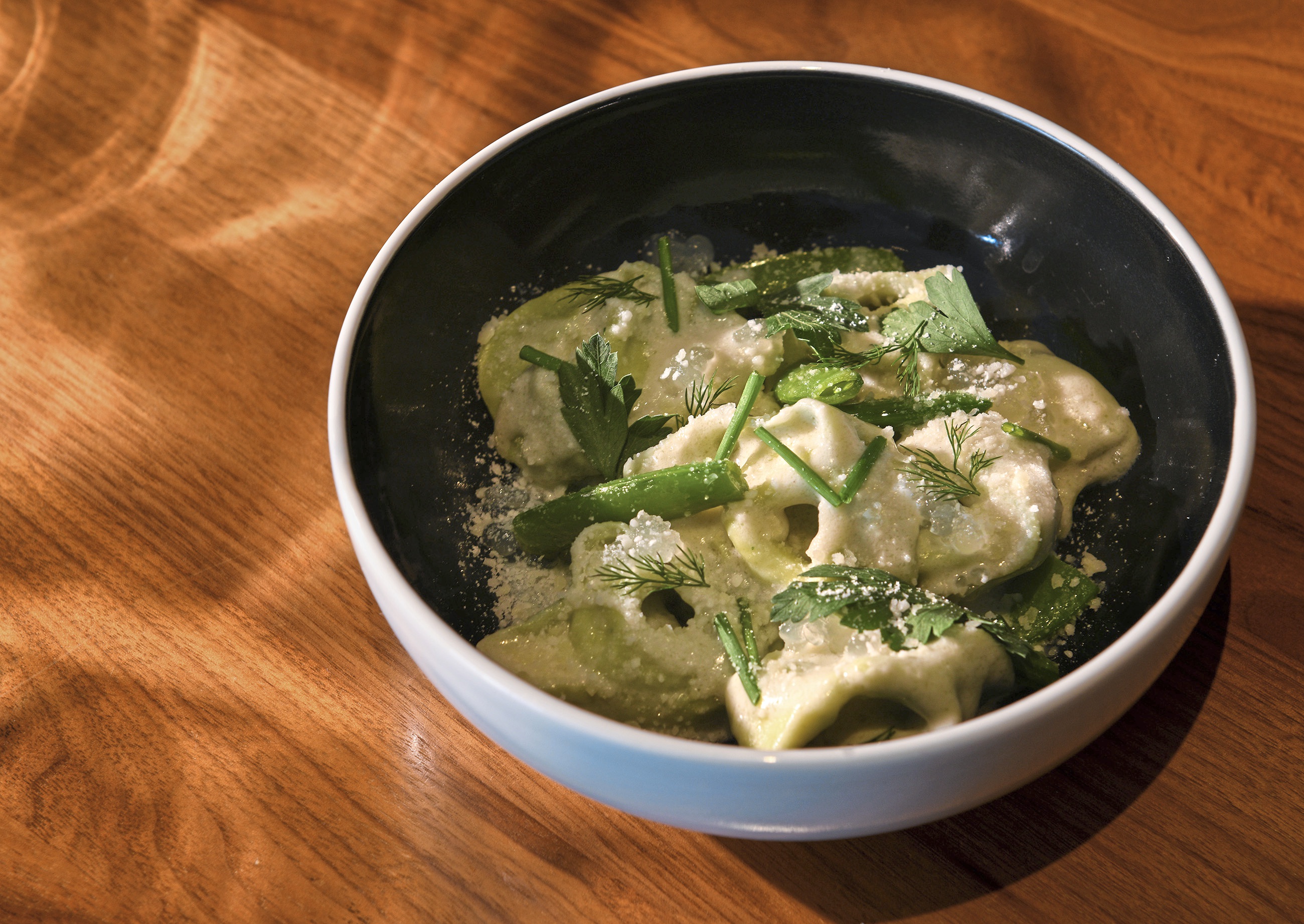


How do you upgrade a building home to world-class museums filled with dinosaurs, gemstones and precious works of art? Well, in late 2016, a big renovation of the welcoming space at the Carnegie Museums of Pittsburgh included a new way of thinking about dining options. The opening of The Café Carnegie provided a chic, contemporary upgrade while still fitting squarely into the timelessness and grandeur of the extraordinary space.
“Ten years ago, I never would have thought to say to someone, ‘Hey, let’s go have lunch at the museum,’” says chef de cuisine Jake Kuhn. “We’ve been able to provide pretty high-end food and service in a beautiful environment in a neighborhood that primarily offers fast casual.”
The dining room features stunning, modernist design with Eames chairs, forests of globe lamps and heavy wood tables, plus a windowed view of a lively fountain and the hubbub of Forbes Avenue. Because it’s part of the museum complex, the Café serves a daytime menu, except on Thursdays when the Carnegie Museums of Art and Natural History are open late, and so is the restaurant. It’s a perfect break ... for a business formal (or casual, come as you are, but you won’t feel out of place being dressed up here), or just a lovely lunch.
“We’re offering something different,” says Kuhn. “And the acceptance from the public about what we’re doing here has allowed us to really expand the scope of what we’re offering.”
The order: Culinaire, a Dallas-based food service firm, runs the dining services at the Carnegie Museums of Pittsburgh, but Doug Genovese, executive chef of Culinaire Pittsburgh, and Kuhn have a lot of room to play.
The menu leans toward light and energizing, with an array of salads leading the charge. It’s also highly seasonal, so you can expect changes throughout the year. Pulled chicken is a reliable fixture at the restaurant, and with shards of chicken piled alongside lettuces, shallots and poppy seed vinaigrette it hits all the right notes. There are tasty vegetarian offerings, including a chickpea banh mi with pickled vegetables and hot pepper aioli. If you’re looking for a heartier lunch, go for pork schnitzel, a crispy classic here served with peach mostarda, Swiss chard and fingerling potato gaufrette.
The cafe introduced a collaborative series in 2022 highlighting a dish from a Pittsburgh-based guest chef. It started with Csilla Thackray’s roasted carrot risotto with dill pistou. At press time, the current feature was Above & Beyond Catering’s Monique Ruvolo’s smoked and beer-braised pork shank with pilsner mustard, autumn greens and Yukon and sweet potato mash. The cafe also features a full coffee and wine bar.
4400 Forbes Ave., thecafecarnegie.com
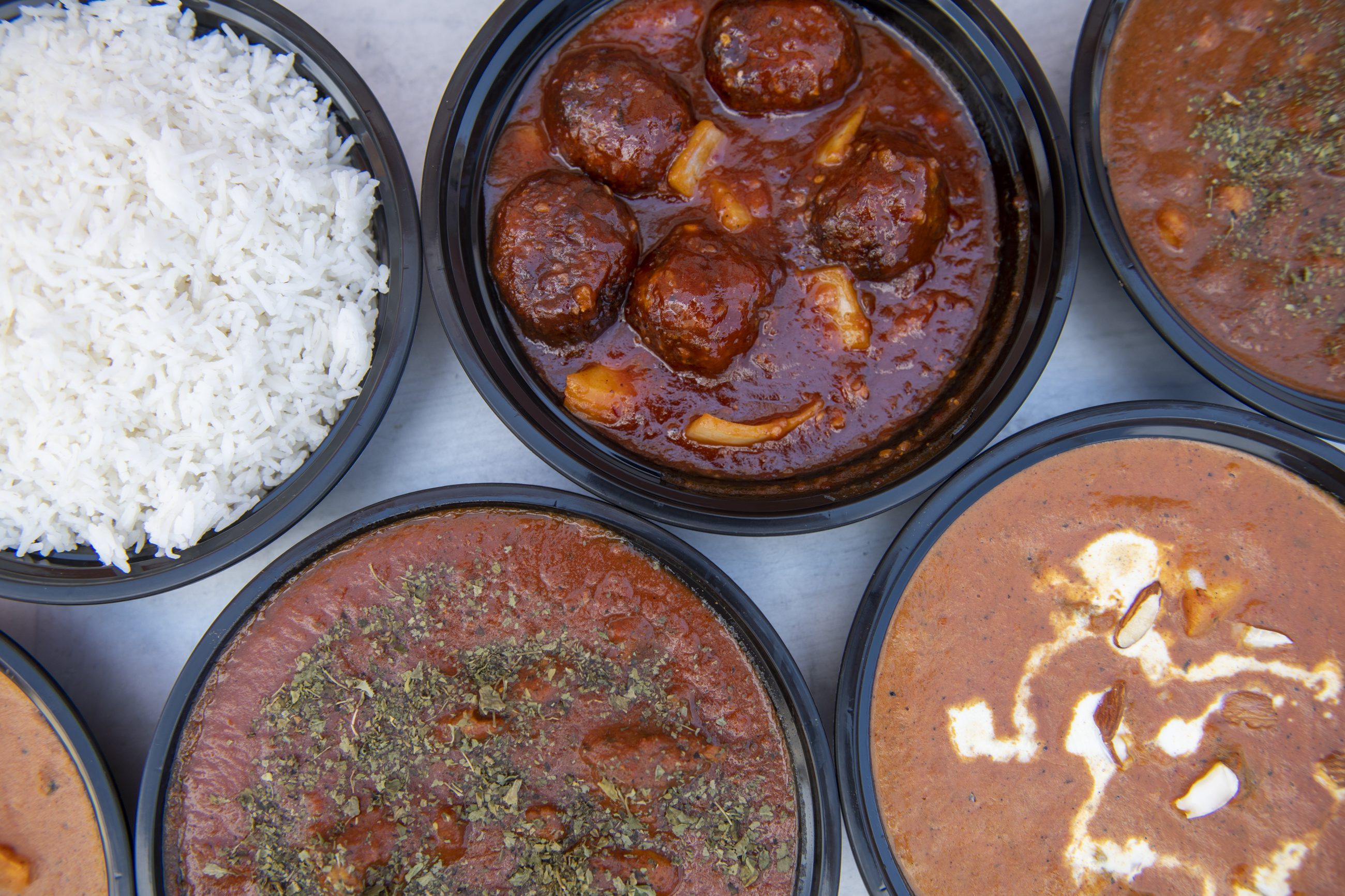
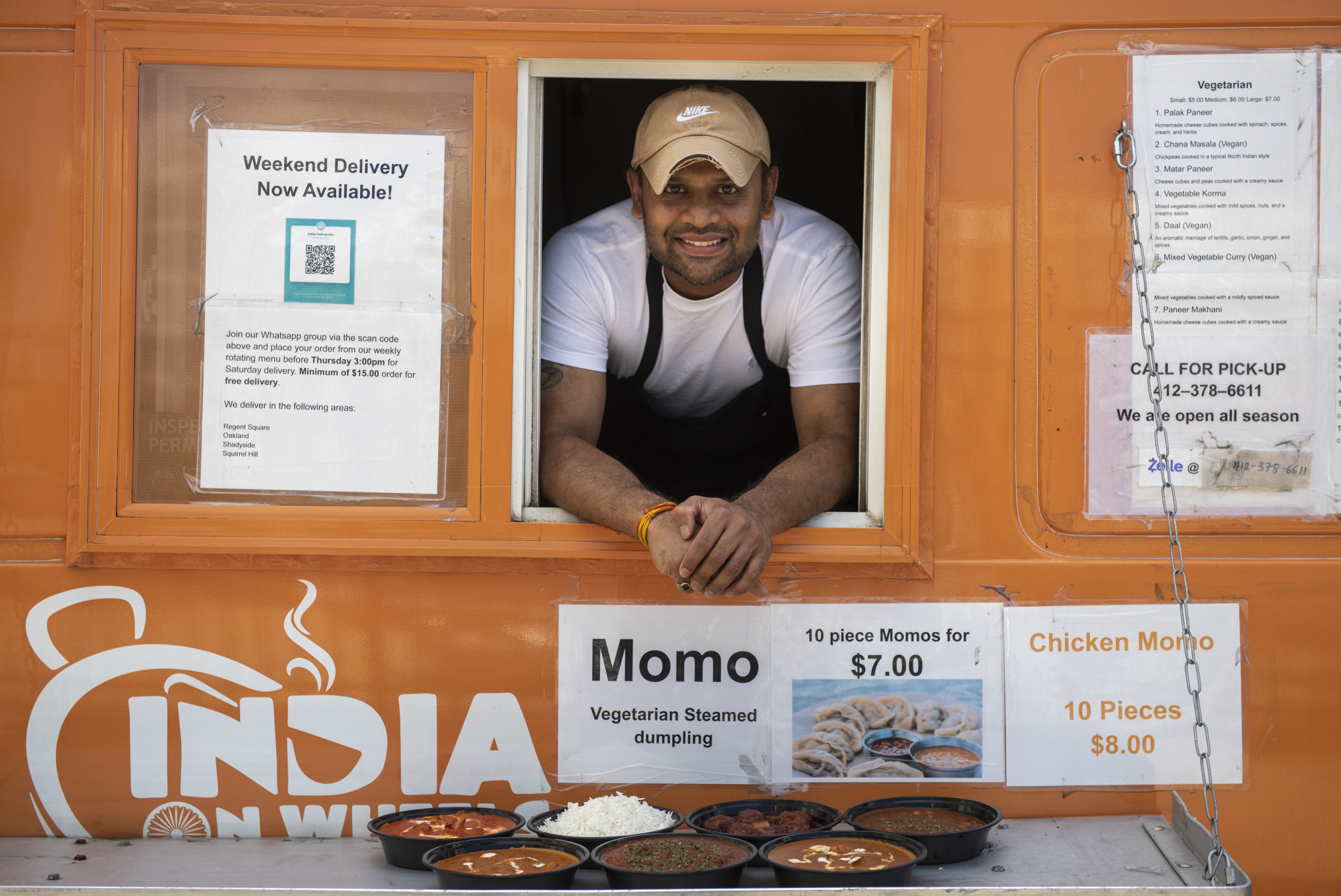
Way before food trucks were hip at breweries, a bunch of them populated Oakland. They have moved from where they once congregated around Schenley Plaza to semi-permanent locations throughout the neighborhood where you can find them for regularly scheduled hours. Most are open for lunch during the week to cater to the needs of the university communities, but a few have hours that extend into the evening. It’s a decidedly international lineup of offerings, and we love them because they offer quick, quite delicious meals at an affordable price.
“You have to be organized and quick on your feet when you’re doing this. We’re taking orders on the phone, we have customers outside, and we’re cooking as we do it,” says Jay Amin, the second-generation co-owner of India on Wheels. “The expectation is that you’re going to get your food quickly when you’re ordering from a truck.”
Amin’s mother, Rita, opened India on Wheels in 1999, and it may very well be the longest-standing food truck in Pittsburgh. The Amins, who hail from Gujarat state, prepare the best Indian food in a neighborhood with several very good establishments. All the spice blends and curries are scratch-made in a commissary kitchen prior to service, and Amin says they try to use as many locally sourced ingredients as possible.
You’ll find a variety of vegetarian, chicken and lamb dishes, including a vibrant methi chicken in an earthy tomato-based curry with fenugreek leaves and luscious butter-almond lamb. As of press time, a small serving (enough for a meal) was $5, and you can get a triple-variety plate with naan and a drink for $7. The truck on Bigelow Boulevard outside of The Oaklander Hotel is the eatery’s third iteration. (Truck two is still rolling and sets up on the Carnegie Mellon campus in Squirrel Hill.)
“Every Indian chef has their twist, but we try to keep it pretty authentic even though it’s a little different than you’d find in a north Indian restaurant,” Amin says.
Parked right next to India on Wheels is Thai Gourmet Express, where Phoc (better known as Tim) and Vilivan Vong began serving Thai cuisine in 2012. You’ll find a scaled-back version of the menu at the terrific brick-and-mortar location of Thai Gourmet in Bloomfield, which their children now run. On the truck, you’ll find tasty noodles, stir-fry and curry dishes that you can mix with a variety of proteins — we’re fans of the pad see ew and pineapple curry. Tim Vong passed away in late 2023.
Newer to the scene is Hundred Miles Crepes. The truck, owned by Gloria Pei and Kevin Gao of Little Corner Grill House, opened in July 2022 and specializes in jian bing, a savory crepe that’s a popular Chinese breakfast street food. The basic version of the dish is a crepe made from wheat flour, dried mung bean powder and black sesame seeds topped with egg and filled with crispy wonton crackers, lettuce and onion.
You can add a variety of other fillings, including sausage, Spam, braised meat and shredded pig ear. The truck’s chef, Ning Zhao, is in the process of adding more Northern Chinese street food as well as grilled meat skewers. You’ll find the truck on Fifth Avenue most days of the week.


Hal B. Klein
Mattie Neretin
Morgan Timms
Hal B. Klein
Ed Yozwick
Laura Malt Schneiderman
Advertisement
Advertisement